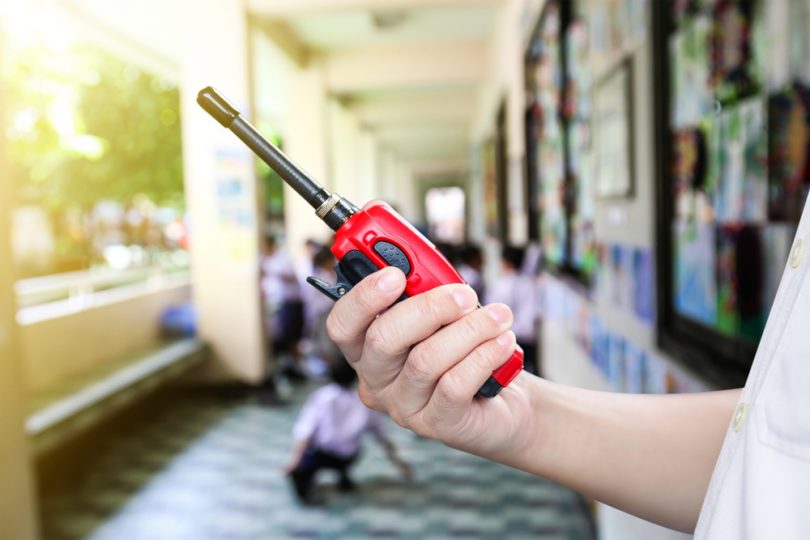Schools today are exposed to several crisis events that may disrupt students’ learning process. These crises are more aggressive and dangerous than normal accidents that affect a person.
For instance, some 55% of school accidents are caused by slips, trips, and falls. Similarly, a student may suffer from strains, sprains, internal injuries, dislocated joints, and related problems.
Some injuries may become life-threatening, such as contusions, lacerations, and even accidental strangulations.
In November 2021 alone, there were almost 50 shooting incidents in American schools. That’s why academic managers should create foolproof strategies to combat these challenges today.
Managing a Crisis in School Effectively
How safe are our schools in the 21st century?
Statistics show that 400+ students lost their lives and 1,500+ injured in shooting incidents this year alone.
Fortunately, we can prevent these traumatic occurrences by formulating an effective crisis management system.
How do we define a school crisis?
It’s a disturbing happening that harms students’ problem-solving abilities and renders them unable to function properly. They feel helpless, threatened, and turn to others asking for assistance.
In such cases, there should be a well-written crisis management system at school to help students and teachers escape the threat.
Here’s how you can manage any crisis at school effectively.
1. Hire Expert Counselors
Close to 90% of schools in the country have an on-site student counselor.
Which qualifications must you look for while hiring this expert?
Distance learning allows people to pursue an MSE digitally now. Attaining an online MSE Crisis & Trauma degree enables educationists and counselors to help students who suffer from severe distress.
This education enables them to provide individualized counseling to assist a student to thrive in school and beyond. So, ensure these expert counselors are always there for assistance.
2. Communicate With People
Communication constitutes the cornerstone of effective crisis management and de-escalation. So, remember to spread your message humanly. Don’t just copy-paste headlines like a machine.
Instead, try to sound empathetic and make sure your message reflects the native context.
Divide prolonged communication into simple FAQs so more people may understand your message.
Open yourself to questions and suggestions from all stakeholders. Also, address misinformation during a crisis.
3. Always Remain Visible
Educators must serve as leaders whenever disaster strikes. It may seem enticing to obscure yourself in a bunker for personal well-being.
However, your students and coworkers need you to be available and visible during crises. Remain accessible to parents who want their concerns resolved as well as their questions answered.
If you can’t make yourself publicly available, ensure there are substitutes to take your place and prevent a crisis from escalating.
4. Address Crucial Issues
We’ve already discussed how effective communication constitutes an important strategy to prevent school accidents.
Educators should meet with parents and mention the importance of limiting their children’s access to weapons.
You can propose installing firearm padlocks or eliminating pistols from homes altogether.
What more can you do to eliminate fabrics that conceal weapons?
You can have some metal detectors installed at school or require students to carry see-through backpacks too.
5. Choose Your Channels

How do you propose to inform people (especially parents) about an incident?
You should choose your channels wisely. Educational institutes contain a mismatch of generations that rely upon different channels to consume information.
So, apply several methods to ensure everyone is informed about an urgent matter. Teachers don’t always have access to computers to check their mail.
You can leverage SMS, radio, or digital signage to communicate.
6. Semantics Are Important
After an accident occurs at school, you must inform people about it honestly and precisely. We advise choosing your words carefully because semantics matter.
Adding or removing even a single word may affect how the public perceives your message.
Avoid sugar-coating the incident or attempting to sweep things under the rug. State the facts in a clear-cut manner. Display honesty about your shortcomings.
7. Update Your Registers
You can’t manage any crisis at school without providing accurate information to your stakeholders in time. It’s essential to account for every child’s presence and ensure where they’re located during an accident.
We suggest keeping your class register updated to make correct decisions whenever something goes haywire. It enables you to coordinate an immediate response effectively.
Also, you can introduce student health surveys to manage an outbreak during this ongoing pandemic now.
8. Prevent Future Disasters
Enable students to articulate their concerns and teach them conflict resolution to minimize violence at school. Ensure you’re available to students whenever possible.
They should send suggestions anonymously to build their self-esteem and feel empowered. Here are some more proposals too:
- Understand your students as individuals and build rapport with them. Make sure you are reflecting compassion through verbal and non-verbal communication.
- Practice rational detachment to prevent yourself from taking hostility personally. When a student disrespects you, understand it’s not always about the teacher. Maybe the student is suffering from problems at home that need attention.
Conclusion
In 1999, the Columbine High School massacre rattled the entire country. Estimates suggest around 278,000 students have experienced school shootings at school since that incident!
That’s why educators must prepare themselves for disasters that may include a student committing suicide, someone’s parent barging in with weapons, or a teacher collapsing in the classroom while lecturing.
What do you do when your paradigm of security has been shattered?
That’s why we should manage crises and trauma properly.
We suggest employing the services of school counselors who can engage with students healthily. We also recommend educators communicate with parents to learn more about students.
Remember the importance of semantics when discussing a school disaster.
Choose your channels wisely when you have decided to share with people. Show some visibility to enhance people’s confidence and update your registers for accountability.
That’s how you stop any crisis from occurring at the school premises.







